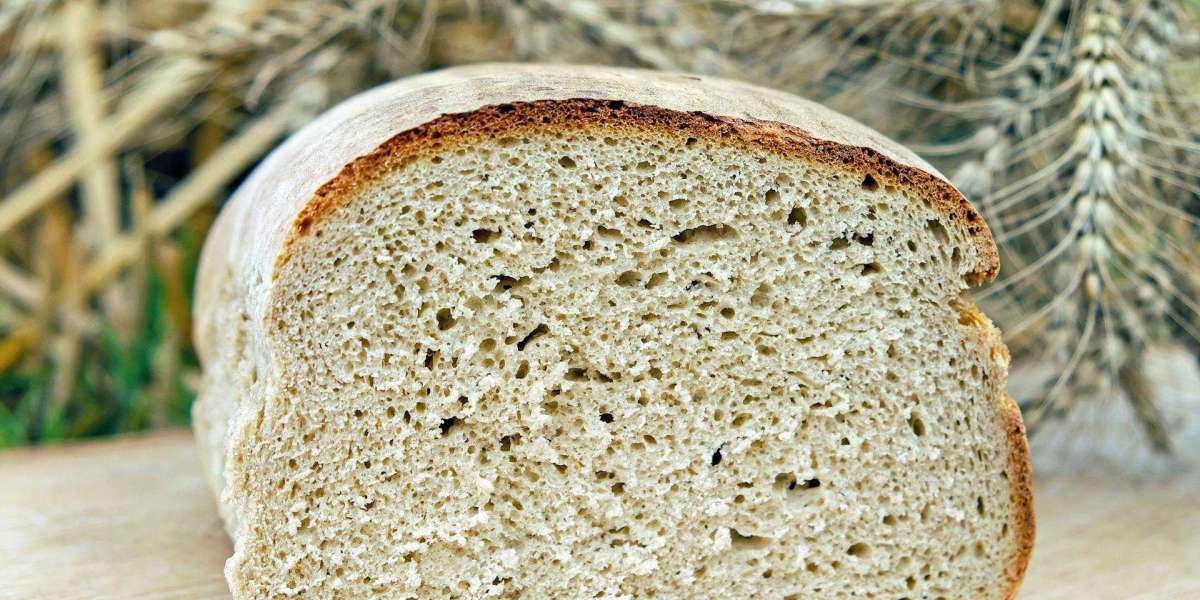A great loaf of bread isn’t just about the crunch of the crust—it’s about the perfect balance of texture, flavor and nutrition. For seniors, the right bread should be soft enough to enjoy without struggle, packed with nutrients that support overall health, and still deliver that satisfying homemade taste. Enter bread flour, the secret weapon for crafting loaves that are airy yet sturdy, tender yet structured. With a little know-how, you can transform this high-protein flour into bakes that are not only delicious but also senior-friendly.
It's the technique that matters most. Without compromising quality, minor adjustments can have a tremendous impact on producing softer, easier-to-digest breads, from careful kneading to thoughtful hydration. You have a recipe for success if you include things like dairy for added tenderness, honey for a hint of natural sweetness, or complete grains for fiber. The goal of baking for elders is to reinvent bread for convenient, wholesome consumption rather than to take away its appeal.
Keep reading to discover the best tips, tricks and recipes for baking senior-friendly breads that everyone will love!
1. Hydration is the Secret to Softness
Want a bread that’s soft enough to sink your teeth into without a fight? Increase your level of hydration. Bread flour can absorb more water because it has more protein, so let it! Seniors who like a gentler bite will love the sensitive crumb that results from a well-hydrated dough. For more moisture and a touch of richness, try incorporating a small amount of milk or yogurt into your dough. Don't rush the rising, either! Gluten can form during a slow, consistent fermentation process without making the bread rough. The outcome? When spread with butter, this pillowy loaf maintains its structure while being straightforward to chew.
2. Knead Wisely, Not Aggressively
Making artisan baguettes may require a strenuous arm workout, but a more delicate method is preferable for soft, senior-friendly bread. Although kneading produces gluten, too much of it might result in a dense, chewy loaf, which is precisely what we want to discourage. Use a stand mixer or the stretch-and-fold method to perform the hard lifting rather than hammering away. This prevents your dough from becoming a resistance band while adding just the right amount of structure. The objective? A loaf that is both soft enough to melt in your mouth and yet firm enough to slice.
3. Fat is Your Friend
Don't cut corners on fat if you want bread that continues to be soft. The dough can be tenderized and kept fresher for longer with the help of butter, olive oil, or even mashed avocado. Fat prevents gluten from forming, which results in less chew and more fluff—exactly what we want for slices that are suitable for older citizens. Apart from that, integrating heart-healthy fats improves the bread's nutritional value and makes it enticingly rich. The finest aspect? Without making your bread a jaw exercise, a little fat gives it a beautiful, somewhat crisp crust.
4. Whole Grains, But Make Them Friendly
Whole grains are a fantastic complement to any senior's diet because they are high in fiber, vitamins and minerals. To be honest, though, there are some whole wheat breads that are like chewing on a brick. The trick? To maintain the bread's light texture while maintaining its nutritional value, combine bread flour with whole wheat or oat flour. A longer fermentation period softens the bran and makes it more pleasant for one to relish each bite, while a little honey or molasses balances the nuttiness. It all comes down to striking the ideal balance between divine and hefty.
5. Steam Your Way to Success
A crisp crust may be the baker's ideal, but a softer crust is always preferred for a loaf that is appealing to older citizens. Presenting steam, your go-to tool for getting a supple yet impeccably defined exterior. By applying steam to the oven during the initial few minutes of baking, you may prevent the crust from hardening too quickly and maintain its pliability and bite-ability. Before baking, try sprinkling the dough or setting a tray of hot water at the bottom of the oven. The result? A gorgeous golden crust that is easy to cut through without the need for a knife.
6. The Right Cut Makes All the Difference
If the bread is cut too thickly or unevenly, it might be difficult to consume, even the softest bread. Neat cuts that don't smash the loaf are guaranteed with a decent serrated knife and a light sawing action (no pressure!). To make things easier, think about slicing the bread ahead of time and keeping it in sealed bags to keep it soft. Do you want to go above and beyond? Before serving, lightly toast the bread to improve texture without drying it out. After all, how a loaf is consumed is just as fundamental as how it bakes.
_____________
Soft for the Seniors
Crafting a winning bite—one that is tender, savory and effortlessly delightful—is the goal of baking using bread flour, not merely creating a loaf. Any kitchen can be transformed into a senior-friendly bread heaven with a few clever adjustments, such as raising hydration and supporting healthy fats.
These tips guarantee that every slice is easy to chew and even easier to adore, whether you're baking for a special someone or just desire a softer, more mousse-like loaf for yourself. Get your bread flour, let your hands go a bit messy. Let's preserve the goodness of freshly produced bread without straining your jaw!
_____________
ABOUT THE AUTHOR:
Nicole Ann Pore is an earnest content writer, committed to creating well-researched and impactful content that informs and inspires. During the day, she crafts compelling content for Mauri Baking Supplies Australia, a first-class source of top-tier bakery ingredients and solutions across New Zealand and Australia. Nicole is a Cum Laude graduate of De La Salle University Manila, Philippines, holding a Bachelor’s Degree in Communication Arts.



